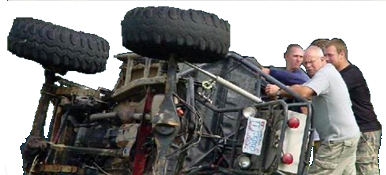The big idea to wrap your mind around when mounting the drivetrain, is to avoid creating stresses that the components were not designed.
The engine block is designed to handle the torsional and axial loads thru the mounting points. This is twisting, and front/rear, side to side and up down.
The transmission case and bell housing is not designed to support or control any of those movements and forces other than basic up down of the tail housing.
Depending on transfer case, some can help handle some of the stress and some cannot.
For example.
An atlas, d300, or 205 etc can be supported by the tail housing (rear output), the side of the case, bottom of the case or even the front output, while a np208,231,241 etc is not designed for these loads and forces.
You don’t want to use the tcase mounts to try to stop the engine twisting in the chassis. Think rotating around the crank centerline.
You also don’t want the motor mounts to try to control the tcase front output trying to rotate and climb a gear when bound up and in 4wd low range.
Both of those scenarios create a huge torsional load on the transmission case, and typically break it where the trans case is smallest diameter near the output shaft.
You also don’t want a heavy unsupported tcase to be unsupported hanging off the back of the trans, with the mount under the back of the trans tail housing.
The same can break the back of the trans off as the tcase tries to bounce all around but the back of the trans is the only thing supported.
When I do mounts, I just try to look at the loads and forces and the components and what can handle what stress and what can’t.
I do not want the trans case itself doing any work other than physically holding the components together.
I also try to keep the mounts that control twisting as wide as practical and possible from the centerline. I also try to match the widths in places to the amount of deflection, and load on each is similar.
The other consideration mentioned above, is you do not want the drivetrain restricting the chassis movement.
So a lot depends on each chassis, each drivetrain, etc, but the principles at play are all the same.
This coming from a guy who has a decent scrap pile of broken parts from myself, my dad, and my friends of figuring out what not to do, and then what to do.





